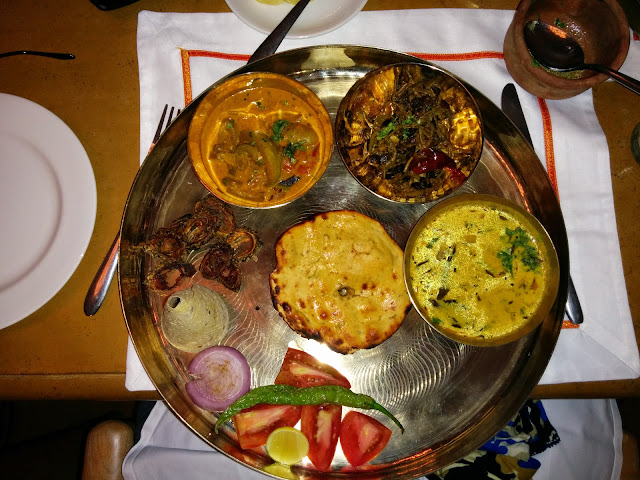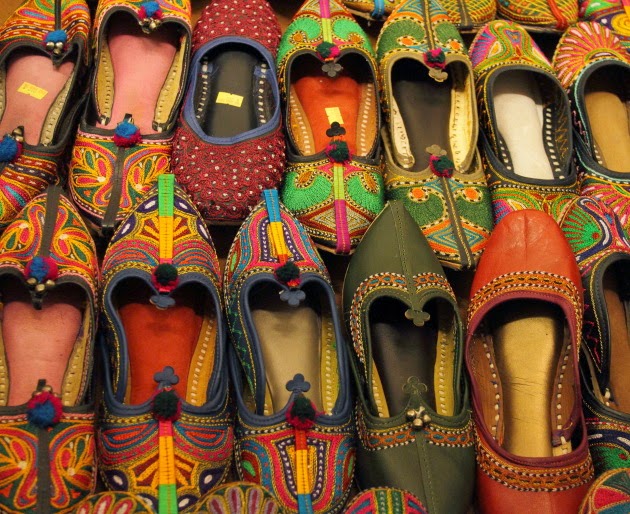Mountaineering, rafting, skiing, trekking, trail running and surfing are just some of the many adventure sports India has to offer. While embarking on any adventure, the traveler has no choice but to discover the heart and soul of the ancient cultures and colorful people. It’s part of the package deal- it’s inevitable.
“This guest article has been brought to you by Himraj Soin, from The Outdoor Journal, an adventure sport publication based in New Delhi, India (www.outdoorjournal.in) and a partner of beontheroad.com. All the photographs in this post belong to the magazine.”
Unclimbed summits, unnamed rapids, remote trails, long hiking- there is no place like India when it comes to eclectic adventures. In the 1980’s, few pockets of climbers who were passionate about the sport, would strap on their colorful harnesses, which looked like they belonged at Woodstock, recruit their buddies, and climb a peak. They were the pioneers; the hipsters, the innovators, and they didn’t even know it. The adventurists of the 80’s are always viewed in awe- for being daring and adventurous, with limited means and awareness. Now, the outdoor scene in India has drastically changed. While still a niche group, awareness is growing- whether it’s mountaineering, climbing, skiing or surfing, amongst many others, the market is growing and people are stepping out of their comfort zones. Even in comparison to a decade ago, the number of people interested and participating in “adventure-activities” has grown exponentially and today, is well over 300,000-500,000.

From the untouched mountains of Kashmir, we bring you- Gulmarg or the meadow of flowers. Today, we have one of the most popular and “best” ski destinations in Asia. Gulmarg in Kashmir will not remind you of skiing in the Alps, or snowboarding in the Rockies. Shredding the Himalayas is a different experience: it’s wider, more dangerous and definitely more remote. Situated in the state of Jammu and Kashmir in North India, the ski resort (Mt. Apherwat) that boasts of the second highest cable car in the world (4,200m) opened in 2005. With a local but competent ski patrol and avalanche safety team, Apherwat offers phenomenal off-piste with breathtaking views of the Himalayas and Nanga Parbat (8000m Himalayan peak). If you like heli-skiing and know how to use the related safety equipment, this is the place to be. The skiable terrain of this mountain is pristine but wild. It is one of the largest, longest, and highest in Asia. A growing market, the slopes are still very pristine and relatively uncrowded. With great five-star hotels as well as rustic, alpine huts- the stay is always comfortable, cosy, and epic. Littered with Indian soldiers, camouflaged in the white snow and green conifers, one feels more than safe while shredding the slopes.
South India has become incredibly popular for climbing. Pilgrimage (2003), a sensational climbing video made famous by American climber superstar Chris Sharma, has driven a lot of traffic to this part of the country. A hot spot for climbing enthusiasts, Hampi and Badami hosts a number of bouldering problems. Savandurga, one of the largest monolith hills in Asia, is another great spot for traditional climbing. Standing tall and granite at 1126m, it has 700-1000 ft high technical climbs. This particular rock wall has seen epic first ascents in the 1980’s. The routes are infrequently repeated and this hill remains a classic today. In fact, only recently did the first American and Indian redpoint an 8b+ climbing problem in Hampi. Having mostly experienced phenomenal bouldering in Colorado, we were extremely impressed with the boulders of the south- a definite must for anyone who wants to rip up some sick, holy, gnar-gnar.

Trekking is also some of the best in the world in this country- from high altitude hikes in the scenic Ladakh, in the Northern state of Jammu and Kashmir, to excursions in the meadows of Himachal Pradesh; the Himalaya is the adventure playground of the world. In the Northern states of Jammu and Kashmir, Ladakh, Zanskar, and the Nubra Valley are more than exquisite for trekking. With purple mountains and green valleys intertwined with the Silk Route, this is the Switzerland of India. With peaks that resemble the Matterhorn, Ladakh is a dream for geologists. Being mostly in the rain shadow of the Himalaya, the contours, cracks, and details are vivid and easy to see with the naked eye- another benefit for geologizing. In the state of Uttarakhand, the Kumaon and Garhwal valleys are littered with towering peaks, alpine meadows and saturated with Hindu mythology. One of the most popular adventure activities, people come from all around the world to visit these states, amongst many.

As for running, once should get away from the main, hectic cities. Apart from the renowned Himalayas, the state of Gujarat, in the North-West of India, close to the Arabian Sea, has recently put itself on the global map of the ultra trail running scene. A site older than the pyramids of Egypt, spanning 100 hectares of an inexplicably advanced city shrouded in five thousand years of mystery, Dholavira was one of the largest metropolises of the Indus Valley Civilization, as well as the most prominent archaeological site- located on a scenic island surrounded by a salt marsh, known as the Khadir-Bet in the Great Rann of Kutch. With varying landscapes from salt plains to desert shrubbery to great white beaches, it has it all. As of recently, it is home to the “Run the Rann” event- an ultra-trail race with different distances in the desert décor of the “Great Rann of Kutch”.

River Zanskar: an up and coming rafting hub in India. Zanskar is situated in the eastern part of the state of Jammu and Kashmir, in the Kargil district with the Zanskar Range separating it from Ladakh. A region in Ladakh, it is one of the highest inhabited places in the world. In the summer, the Zanskar, one of the highest rivers in the world, creates Grade four and five rapids, many of which are still unnamed. In the winter, the river freezes over and the only way to access the kingdom is by trekking on the frozen gorge. We went rafting there in the summer and after emerging from the canyon, our adventure ended at the confluence of the River Indus and the River Zanskar- a beautiful conclusion. We had survived grade five rapids called the Dislocator and the Constrictor, as well as paddle through a mountain blast. We had had a psychedelic five-day trip- without the peyote. Throw the Zanskar River into your bucket list, find the Copper Star- it’ll be gorge-ous. The last lost horizon of the world, the land of white copper, it is the Grand Canyon of Asia.
Due to it’s myriad of cultures, varied topography, and endless adventure opportunities; India has become a popular yet pristine country to explore. Always accommodating to the influx of tourism, adventurers, and explorers, the industry is growing and will continue to do so, the adventures will flourish and people will discover.
Continue Reading...








































































